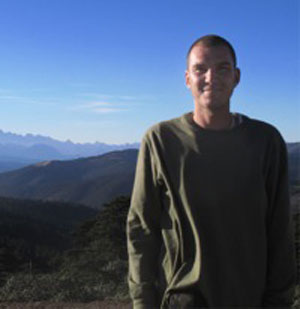Alexander Technique
Gentian Rahtz BA (Hons) M.Ed, LCSP (Phys) S.T.A.T. CERT

Alexander Technique
Alexander work is a fundamental body/mind education in awareness of how we move and breathe and find regular moments of stillness in everyday life. It improves “body sense" (kinaesthesia) and gives a pleasurable feeling of wellbeing, of being both more supported and more relaxed. It can also be a training in mindfulness, a heightened ability to be in the present moment
This re-education of the nervous system and support reflexes can seem more like therapy at first but offers effective and long term help with a surprisingly wide range of mind/body concerns. A course of sessions is needed.
- Muscle pain/stiffness, bad backs, stiff necks and shoulders, sciatica, injury
- Neurological problems such as MS or Parkinsons
- Feet, knee or pelvic issues
- Arthritis /joint pain
- Breathing and posture issues, computer use
- Stress, tension, anxiety and depression, fatigue
- Public speaking of any kind/stage fright
- Body/mind skills required by actors, dancers, vocalists, musicians, sports people, runners,etc.
- Yoga, meditation, tai chi, chi gung practitioners etc.. Alexander work facilitates the flow of subtle energy and is helpful for many aspects of spiritual practice.
Head, neck, trunk alignment
The Alexander Technique in practice
Head leads the spine, breath opens the heart
Teachers use subtle, highly skilled hands-on work plus detailed observation to guide the student through a wide range of slow movement, couch work or slow stretches while the student learns to direct their attention. Principles of human movement and anatomy emerge gradually through a course of sessions/ lessons.
Methods of teaching, perceptions of the technique and appropriate depth of work can differ noticeably between teachers and inevitably students need to find a teacher that suits them. Gentian is a senior and relatively unconventional teacher whose wide training and experienced allow her to work in an intuitive and flexible way. She is interested in the wider implications of this fundamental and life changing work. Her training in cranio- sacral work and eastern meditative disciplines have expanded her understanding of the Alexander Technique spectrum.
More explanation of human movement
While animals are organised to move through space with the head leading and body following (eg a cat or dog stalking or running) humans have a vertically poised upright system with a remarkable ability to support itself against gravity without locking the joints. The body hangs freely from the head with a very puppet like instability which paradoxically stimulates a reflex system of balance, postural support, breathing and co-ordination.
Muscles don’t just contract to produce movement, they are elastically stretched within this skeletal framework to create a lattice-work of support thus converting the entire musculoskeletal system into a spring like framework.
Stretch reflexes in the neck in particular play a primary role in organising this system and are elicited by the natural balance of the head in relation to a lengthened and supported spine.
However, for a wide variety of reasons, we may gradually constrict and shorten this exquisitely suspended and finely tuned mechanism, especially with the demands of modern living such as computer use.
Frederick Matthias Alexander (1869-1955) spent a lifetime exploring these patterns of interference and also how to restore the elasticity and freedom of movement , the “natural good use” which most of us had as children. Our understanding of the deep and radical implications of his work continue to develop, especially in the light of new discoveries in neuroscience about the dynamics of mind, body and emotions.
The formative experiences of our lives do not just shape our character, they also shape our bodies; this process of gradually uncovering natural good use can feel like coming home to ourselves.
Hopper’s art enacts ways of seeing and understanding that anchor superficial situations in profound depths. His later work invariably draw their impact from what is unexpressed.
(Edward Hopper - American painter 1882 -1967)

